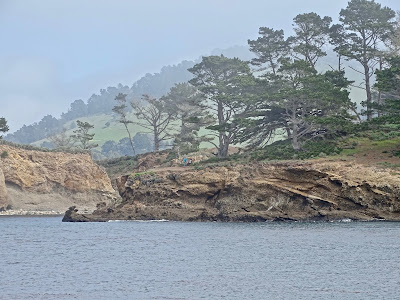Yesterday the wind was very light, and I did the spring fertilizing. I used almost three 35-pound bags of HollyTone for the acidophiles like azaleas, hollies, rhododendrons and dogwoods. For the rest of the shrubs, trees and bulbs, I used generic 10-10-10 fertilizer, three 40-pound bags. In May I do a second round of feeding just for things that still look hungry.
Forsythia and daffodils have sustained damage from the late snowstorm and freeze. Both of those and other early spring bloomers will not put on much of a show this year. The fault lies not with the storm, which isn’t unusual in March, but with the warm February that led those plants astray. [I didn’t say that they were led down the garden path.] Not to belabor the point too much, I hope, but this is an example of harm brought on by climate change.
New blooms: Siberian squill.

Mr. and Ms. H. Finch considering the neighborhood and the apple tree on a rainy morning.

'I wonder where the yellow went.' That's a line from an old toothpaste ad that now applies to the forsythia.

The brown buds are dead.

This daffodil should have all upright stalks, not this floppy mess. There are a couple flower buds that may open, but this cluster usually has a dozen flowers.



















































